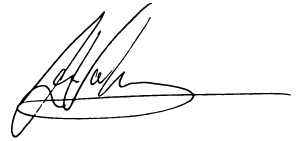- How likely are 1,000% winners?
- Quantitative vs. qualitative analysis
- Weird, strange and bonkers
Over the last couple of days, we’ve looked at the small-cap markets.
Notably, what kind of mindset and approach do you need for this market and how to practically filter down tens of thousands of stocks to one.
Today is more of the same – what do you need to implement into your investment brain to make the most of the small-cap sections of global markets?
The third part of hunting in this exciting market playground is figuring out what turns a company from a market cap in the millions to a market cap in the billions?
What is it about a particular company that gives you that gut feeling that there’s more to this story than perhaps is currently known?
This part of the process is the most variable, the most elusive and the hardest part. Because you can be right about a company and it delivers great returns, 20%, 40%, 60% even 100%. I’m sure, right now, investors would happily take anything like that in a single year.
You can double your investment and still be disappointed. Disappointed because it’s not that elusive ten-bagger. You can be happy and sad at the same time, because of untapped potential in a stock that still does incredibly well. That is the highs and lows of small-cap stocks.
And to be upfront about things, the chances of locking on to a stock that goes on long term to deliver returns of over 1,000% is rare. It’s not impossible at all, I’ve recommended several, over time, that have gone on well past 1,000%. They include, Nvidia, Archer Materials, Appen, Bitcoin and Ethereum (not technically stocks). But it’s hard, it’s by no means an exact science, and most stocks that you invest in won’t deliver that kind of return.
But it is possible. It is achievable. It can happen, with the right mindset, the right conviction, analysis and the ability to join the dots to unlock that potential.
That leaves the question: how do you join the dots? How do you value the intangible and potential within a company?
Numbers tell part of the story.
When it comes to investment, you often hear the terms, quantitative analysis and qualitative analysis.
In short, these are investment analysis styles. Quantitative looks at the numbers behind a company. It uses financial models, and statistical modelling to figure out the value and potential value of a company. It is said that this is often a bottom-up approach to analysis.
But quantitative analysis can’t necessarily value the intangibles that a company might have. If all you look at are the numbers, then you can easily miss a big opportunity. Numbers tell part of the story.
Qualitative analysis looks more at a deep understanding of the area of investment, the industry, the big picture implications, and then narrows that down into a specific company. It’s very much looking at the subjective angles of an investment, the intangible nature of a product or service, and the wider potential that it has in the market. It is often thought of as a top-down approach to analysis.
In my view, there is a place for both in all analysis. One does not necessarily trump the other. However, if you’re looking for the overlooked, the under-the-radar, the market secrets that exist in the small-cap world, then my view is that you need to take a qualitative approach to looking at the opportunities in the market, and then overlay a quantitative view.
The ability to look at an opportunity from a qualitative perspective is not something that you can just run through a filter or plug into software.
You need to have a depth of knowledge and the ability to join the dots to make qualitative analysis work, and for most it’s:
- too difficult and time consuming, and
- most people lack the requisite depth of knowledge.
It’s also why I’m of the view that successful small-cap investing also requires an element of social science to master. And that’s a big part of understanding where dots connect.
Fundamentally, when you think about every single company on earth, ask yourself in simple terms: what do they do?
You can answer that in a sentence…
Every company on earth is selling something. That’s what they do. They sell something to someone. Now, maybe that’s a service, a product, software, hardware, or maybe it’s just selling a promise. Either way, companies are just selling something to someone.
That someone could be another company, it could be a person, like you. It doesn’t matter. At the end of the day, you need to think about things in very simple terms.
Is what this company is selling, good, useful, in demand? Will it be in demand? Is what its developing going to be in demand? Is there a market for this company and what they do in one year? Five years? Ten years? 50 years?
Will people buy this thing? Will other companies want it? Will they want it so bad that people will buy the whole company for it?
Will people use it? Will people spin up into a mania for it?
Weird, strange and bonkers
These are the questions that you think about when you’re looking at a company, and figuring out where the future value lies.
You also need to consider what society looks like when you expect the demand to be there. If you think about the changes in society from decade to decade, you know that desires and demands change. How we communicate and interact with each other changes. We are always changing.
So, you need to factor in change when looking at companies in the small-cap world. And this is where you start to connect your dots.
And I use the example of the metaverse. Now to most people right now, the idea of existing inside some kind of virtual world is very foreign. Too weird. Too strange. Too bonkers.
However, that’s what most people think. And we are not the herd.
Think back over time, your own experiences, as to how the world has changed when it comes to social interaction. Once upon a time, it was weird, strange and bonkers to call a person on a telephone.
Then it was weird, strange and bonkers to send them an electronic mail.
Then it was weird, strange and bonkers to video call someone through your phone.
And it is weird, strange and bonkers to chat real-time with an entire community inside a video game.
But these are all things that are not weird, strange or bonkers anymore. So, is it really that weird, strange and bonkers to think that a virtual world isn’t the place to be in the mid-2030s? That perhaps the steps towards an augmented, virtual way of communicating and existing is something you should be looking at rather than (like the herd) dismissing first hand?
These are the thought processes that you take when everyone else says it’s too weird, strange and bonkers.
And if you believe that, perhaps, that could be what our future looks like, then you start to ask those earlier questions. What is needed for that? What products, services, hardware, software do we need for all of that?
Which companies are doing that now? Which companies are developing that technology now, for tomorrow? This helps you to find a lot of companies, of which you’ve applied a few filters to help narrow your fishpond, you’ve decided that the weird, strange and bonkers is an advantage that you’ve got and then you just need to figure out if that company can get the products/services to market and make money from it.
Companies don’t have to make money today, but must be able to survive long enough to ensure that companies are able to make money when it counts.
Now again, this is no perfect science. And you’ll get it wrong sometimes. That’s the nature of qualitative analysis. That’s the nature of looking at the weird, strange and bonkers ideas in the market.
But it’s also where you give yourself the biggest chance for big winners. It’s also where I think you have the most fun in the market, too.
If you think that you’re ready to have fun in the market, to be looking at and then investing in the weird, strange and bonkers stocks that have the potential to light up the markets in the coming years, then I suggest you head here, read some more about what I do and what kinds of small-cap stocks I look for, and join me at Small Cap Investigator.
Now, tomorrow you’re going to hear from John Butler in his regular Thursday slot. And then, on Friday, I’ll be back with one more essay for you all about small-cap stocks. In fact, what I’m going to do is give you a sneak peek “under the hood” and fill you in on the kinds of small-cap stocks that I’m looking at now, and that make up some of the recommendations that I’ve already made in the small-cap segment of the London Stock Exchange this year.
Make sure to tune in and check it out, as there’s going to be some weird, strange and bonkers in there for you!
Until then,

Sam Volkering
Editor, Fortune & Freedom



